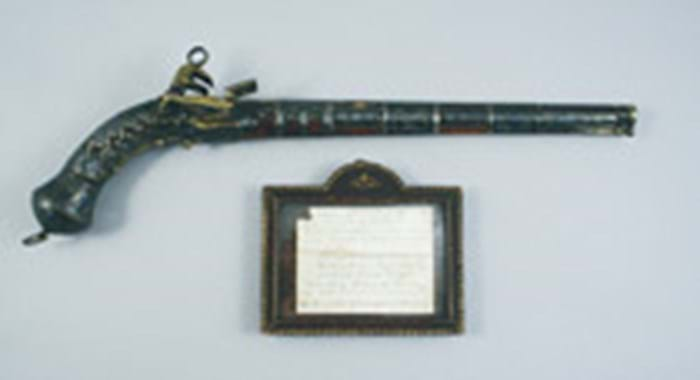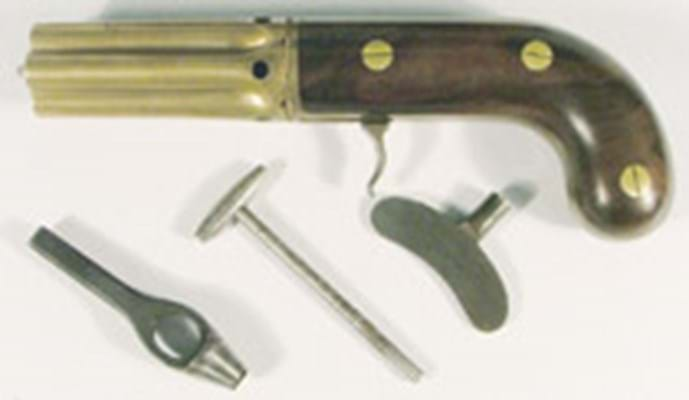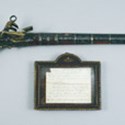One was a silver-mounted Daghestani miquelet lock pistol, c.1850 - highly decorative and damascened in gold and silver with an Arabic inscription on the barrel. This translates as:
The day of Genghis Khan has come upon the enemy, Apologise to me, O enemy, For I have fire in my mouth! Remember I have no mercy on the hypocrite.
But some of its appeal relates to a framed handwritten note describing the weapon and adding: Belonged to Robert Browning to whom it was bequeathed by his friend Ernest Benzon. Presented by Florence L. Barclay.
Pamela Neville Sington of the Browning Society describes Benzon as a rather enigmatic figure. A German-born steel magnate, his elaborate parties at 10 Kensington Palace Gardens in London from 1862 to 1873 drew guests such as Felix Mendelssohn and George Eliot. Robert Browning and his son Pen were also Benzon's guests at his estate at Loch Tummel in Perthshire.
"In 1889 Benzon's dissolute grandson, also called Ernest, described what happened to the family fortune in his book, How I Lost £250,000 in Two Years.
As for Florence L. Barclay (1862-1920), she was the Barbara Cartland of her time. Daughter and wife of a clergyman, and dedicated mother of eight children, Florence was a very successful novelist, writing largely about the benefits of a sin-free life and the joys of wedded bliss. She was a great admirer of the Brownings and in May 1913 she attended Sotheby, Wilkinson & Hodge's six-day auction of the Browning collection, making a number of purchases, including a writing table, Browning's wife, Elizabeth's favourite chair and this pistol.
Gorringes thought it might make £3000-4000 at auction and they weren't too far wrong. In Lewes on October 23 it sold at £4300 (plus 17.5 per cent buyer's premium).
The other item was a pepperbox pistol is by Edwin Beard Budding (1795-1846). The mill machinery engineer from Stroud is perhaps best known as the inventor of the lawn mower in 1830, but it was not his only moment of brilliance. Among his other inventions were the screw-adjustable spanner (it was not patented), a machine for cutting vegetables (1840) and this very early pepperbox.
His pistol, designed some time between 1825 and 1830, was revolutionary for its five .30" calibre rotating barrels and a concealed percussion firing mechanism. Interestingly, these revolvers were produced well before a patent for a similar design was taken out in America in 1836. Probably less than 50 were made but one came to light at Nigel Ward & Co. of Pontrilas, Hereford on October 27.
The pistol - a so-called second model - was in exceptional condition and sold complete with its original green baize-lined walnut case, a blued metal turn-key for removing the rotating barrels, a cleaning rod and a wad-cutting punch. Inside the lid is a label giving full directions for use, printed locally at the time by J.P. Brisley, Stroudwater.
The auctioneers thought it might make anything from £1000 to £4000. In the end it took £5000 (plus 10 per cent premium).
Triggering tantalising tales
Two different pistols with very different stories sold at provincial auctions in the UK in October.








